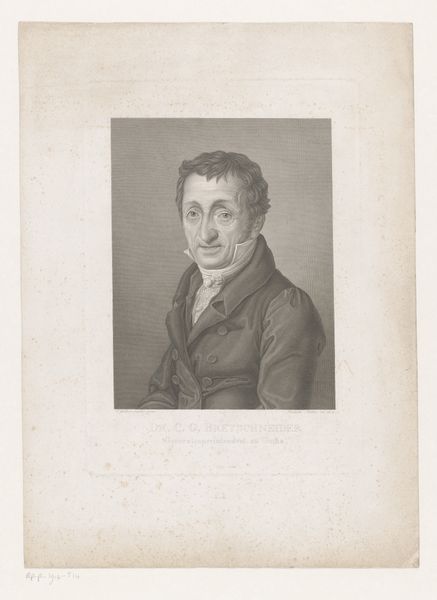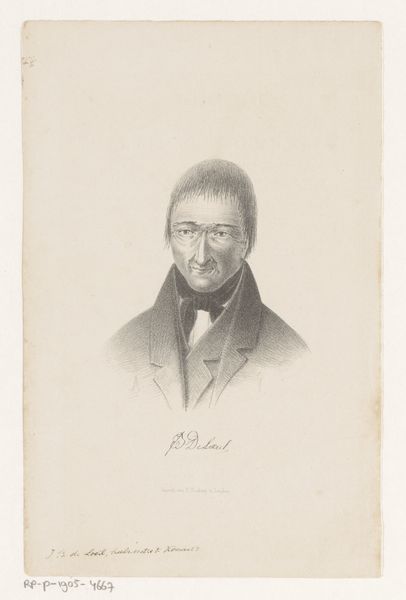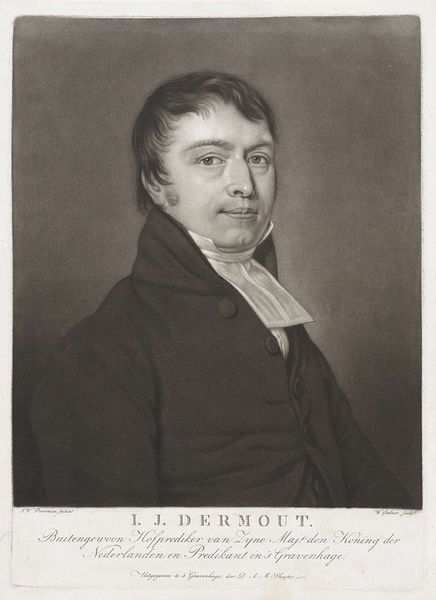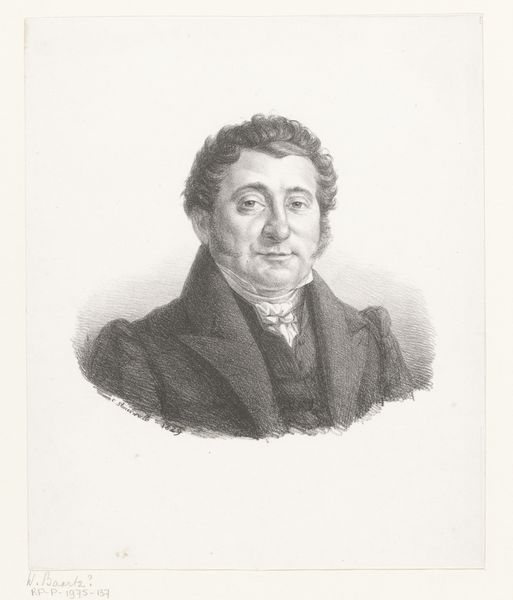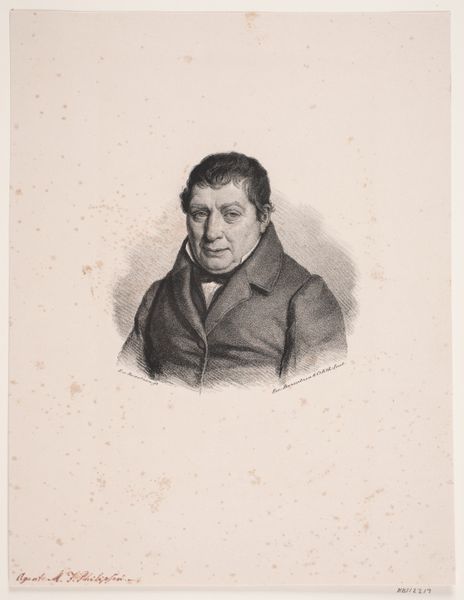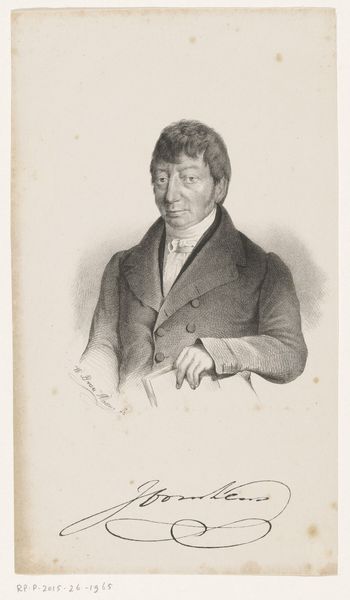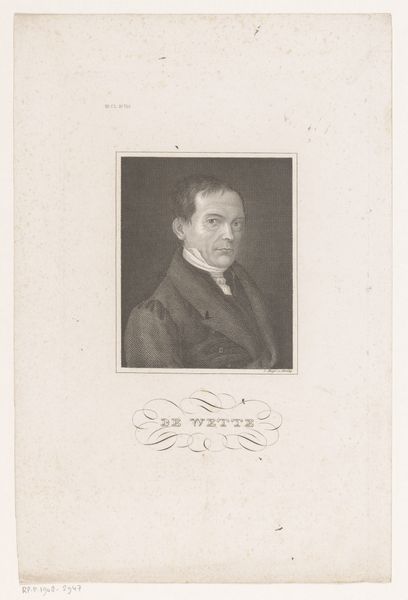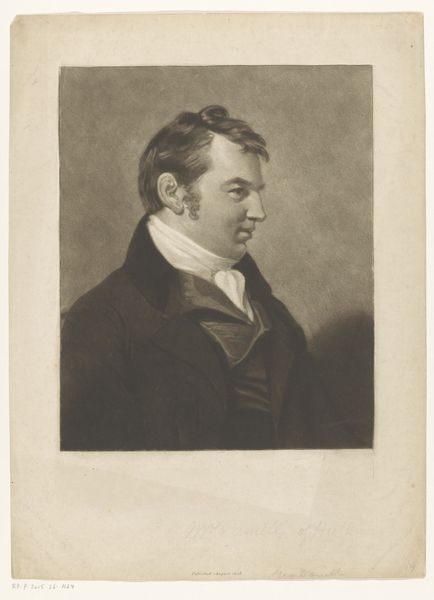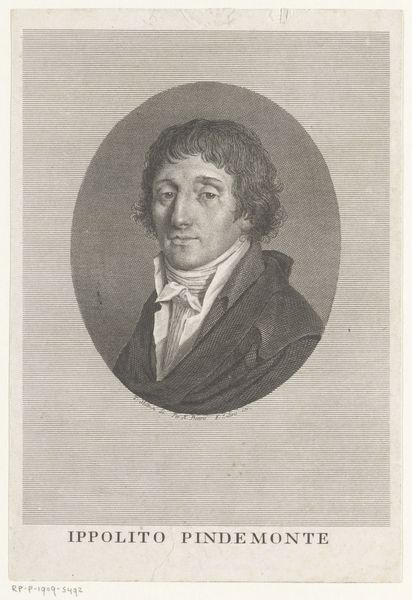
drawing, pencil
#
portrait
#
drawing
#
picture layout
#
facial expression drawing
#
photo restoration
#
expressing emotion
#
pencil sketch
#
portrait reference
#
pencil drawing
#
romanticism
#
pencil
#
photo layout
#
portrait drawing
#
academic-art
#
fine art portrait
#
realism
Dimensions: height 350 mm, width 295 mm
Copyright: Rijks Museum: Open Domain
Christiaan Andries Matveld made this portrait of Adriaan Verwijs using lithography, a printing process that democratized image-making in the 19th century. The process begins with a flat stone, typically limestone, on which the artist draws with a greasy crayon or ink. This drawing attracts oil-based ink, while the blank areas are treated to repel it. The stone is then dampened with water and inked; the ink adheres only to the drawing. Finally, paper is pressed against the stone to transfer the image. Lithography allowed for the relatively quick and inexpensive reproduction of images, making art more accessible to a wider audience. The soft, grainy texture of the lithographic crayon gives the portrait a subtle depth and character. The technique allowed for an intimacy previously reserved for drawing, but with the reproducibility of print. This speaks to the changing social and economic landscapes of the 19th century, and to the rise of the middle class and their desire for affordable art.
Comments
No comments
Be the first to comment and join the conversation on the ultimate creative platform.
